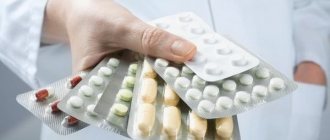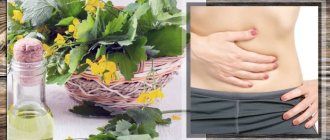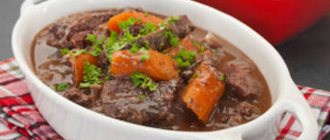Medicines for stomach pain should be taken only after the cause has been determined. The first question that needs to be answered in order to choose the right remedy for the stomach is: does it really hurt? If there is no doubt about the origin of the pain, you should find out the reasons for its occurrence.
How can you determine where your stomach is located?
Draw a conventional horizontal line through the navel. The stomach will be located above it. Approximately 2/3 of its parts are located in the left hypochondrium, the remaining part is in the epigastric region (under the costal arch of the chest). Therefore, stomach pain is most often felt in the area of the 4th intercostal space on the left.
Figure 1 - When your stomach hurts, you need to find out whether the stomach is to blame
Main causes of stomach pain
The need to take syrups or tablets for stomach pain most often results from:
- unhealthy diet - regularly skipping meals, eating dry food, overeating, fasting, alcohol abuse, eating sour, spicy food on an empty stomach;
- poisoning with low-quality products, inedible substances;
- cholecystitis - inflammation of the gallbladder, stones in it;
- pancreatitis - inflammation of the pancreas;
- gastritis, diverticulitis - inflammatory diseases of the gastric mucosa;
- stomach ulcer, duodenal ulcer;
- gastroesophageal reflux - the valve that separates the esophagus from the stomach does not work correctly, resulting in digested food being thrown into the esophagus;
- parasites – cause intoxication of the body, which is manifested by vomiting, nausea, bloating, etc.;
- intolerance to gluten, lactose, and other substances;
- prolonged stress.
Figure 2 - About 10% of stomach pain is caused by an ulcer
Interaction and compatibility with other medications
Antibiotics are included in the treatment of peptic ulcers caused by Helicobacter pylori. In the instructions for using Solcoseryl in injections, the manufacturer does not prohibit combining it with antibiotics for stomach ulcers. The main advantageous feature of the drug is its compatibility with antacids and histamine blockers.
It is prohibited to combine:
- with natural herbal remedies;
- with intravenous or subcutaneous forms of Ginkgo biloba, naftidrofuryl.
Use with caution in combination with medications that increase potassium levels (potassium-sparing diuretics, vitamin-mineral complexes with potassium).
How does it hurt?
The pain can be aching, sharp, dull, bursting, squeezing, cutting, stabbing, pulling.
| Nature of pain | Possible diseases |
| Sudden acute | Cholecystitis, pancreatitis, duodenal ulcer |
| Sudden sharp | Poisoning, chemical burn of mucous membrane, perforation of ulcer |
| Dull aching | Chronic gastritis, initial stage of ulcer. With gastritis, pain appears on an empty stomach and immediately after eating |
| Dull aching, turning into a burning sensation | Acute gastritis, ulcer |
| Spasms, contractions (most often at night or after eating) | Inflammation of the duodenum, ulcer |
| Mild aching pain that does not disappear for a long time | Polyp, malignant formation |
| Severe pain, contractions | Gastrointestinal infections |
| Severe pain in the upper abdomen that lessens over time but does not go away completely | Diseases of the large intestine (eg, colitis) |
| Severe pain in the navel area that moves to the right and up | Appendicitis |
A short-term “shooting” pain that is felt after a sudden movement or when inhaling indicates a spasm of the diaphragm. In this case, the stomach may not be to blame - such sensations are characteristic of circulatory disorders and inflammatory processes. Therefore, medications for stomach pain are likely to be ineffective.
Figure 3 - The nature of pain is important for diagnosis
To accurately make a diagnosis and prescribe effective treatment, a description of the pain is not enough. You need to undergo a series of tests, for example, for the presence of Helicobacter pylori (the bacterium that causes stomach ulcers), as well as ultrasound, FGDS. That is why you should ask not a pharmacist, but a gastroenterologist, what to drink for stomach pain.
Under no circumstances should you endure stomach pain or suppress it with medications without a doctor’s prescription. Painful sensations are a signal that something is already going wrong in the body, and urgent professional intervention in its functioning is necessary.
Injections for stomach ulcers: solcoseryl and other injections
Modern medicine often surprises people with new possibilities. Over the past ten years, previously invincible diseases have become amenable to medication.
It is too early to celebrate the final victory over a large number of diseases. It is worth recognizing that doctors can alleviate the suffering of a person suffering from a stomach ulcer. Modern medical developments help treating physicians to simultaneously treat duodenal ulcers, which suffer due to the close proximity to the affected stomach.
Why does a patient need injections?
There are a considerable number of methods recognized as the best, tested by generations of doctors. But sometimes the new does not cancel the old.
We are talking about injections. Not every patient recognizes the need for injections as necessary. Most diseases, ulcer disease is no exception, are treated with injections. This need is explained by the influence of several factors, and the main one is highlighted.
Taking medications in the form of tablets or syrups has positive results. But not every human body has a good “relationship” with this type of drug.
At times, surgical intervention is required to treat the disease, and the effect produced by the pill can only appear after a certain time. With injections, such a delay does not occur.
The drug is quickly absorbed into the blood and tissues of the human body, the active substance reaches its target almost instantly.
The ulcer should be disposed of carefully, using caution. It is important for the patient to understand what medications are needed for complete treatment.
The most popular medications: what are they?
As a rule, doctors use injections at the time of exacerbation of the disease, usually in the spring or autumn. Injections for stomach ulcers are often used to alleviate the pain that occurs in the patient.
Using a vaccine is much more practical. The medicine works many times faster. Taking pills that irritate the already inflamed gastric mucosa is not always indicated. Do not forget that medications may be lost, or a person may forget to take a pill. An injection can come to the rescue in a timely manner.
Not all drugs can help treat the disease. For a patient at risk of developing the disease, it is better to remember the medications described below. It is important to understand that self-medication is unacceptable. Medicines are taken only with the permission of a doctor.
Papaverine
When pain occurs, a person experiences severe spasms that cannot be relieved with conventional medications. For the purpose of quickly providing assistance, an injection of papaverine was invented.
This is an antispasmodic, classified as an alkaloid. The purpose of the active substance when it enters the patient’s body is to eliminate spasm. The drug relaxes the muscles of the stomach, bringing relief.
Injections of the drug are performed in two ways:
- intravenously;
- intramuscularly.
The dosage and route of entry of the medicine into the human body is determined by the doctor.
Atropine
Sometimes painful sensations begin to appear exclusively during the exacerbation phase, and outside of this time period a person does not feel the presence and development of the disease.
Injectable drug for ulcers
In these cases, papaverine becomes unsuitable: the injection is indicated for regular use, the drug does not have enough “strength” to cope with severe seasonal exacerbations.
In moments of exacerbation, doctors remember the presence of Atropine, which is included in the list of anticholinergic drugs. The medicine reduces the effect of the disease on nerve endings and is suitable for relieving sharp and severe pain that is excruciating for a person.
Dosages are carried out similarly to the previous drug.
Kvamatel
Sometimes ranitidine injections are used instead of quamatel. These medications differ from those described above.
The action of these drugs is not aimed at reducing pain, but at preventing, gradually reducing the release of hydrochloric acid. The medicine is used if the patient has frequent remissions and relapses.
If the patient complains of constant acute pain that occurs after the completed course of treatment, the drug will help alleviate suffering. The presence of acute pain in the abdominal area is of particular importance.
As a rule, the disease and manifestations are localized around the navel, gradually spreading in waves throughout the abdominal cavity.
Medicine for injection
No-shpa
The drug named is similar to atropine. No-spa is used as an antispasmodic substance that can “calm down” a raging ulcer.
The drug is administered intramuscularly if the discomfort is not very noticeable. If we are talking about constant spasms, more reminiscent of attacks of acute pain, the doctor decides to administer the drug intravenously. No-spa is perhaps the weakest drug among those listed. It affects the muscles of the stomach, smoothes smooth tissues, relieving discomfort.
What is solcoseryl
In addition to the medications given above as additional injections, modern medicine offers a special drug. The remedy produces a quick positive effect, which explains its endless popularity among people with a sick stomach or developing duodenal ulcers.
We're talking about solcoseryl. This drug of biogenic nature is considered the best on the medical market. The injections were first used in Switzerland; the blood of calves is used for production. This fact does not change patients’ opinions about the drug. In addition to the controversial component, the composition includes other important substances:
- purine;
- amino acids;
- polypeptides.
These elements represent a unique composition of substances that ensures, maintains, and restores proper metabolism. The main object becomes the intestines. Under the influence of the drug, enzymes are activated that help the body carry out the redox process.
Solcoseryl for stomach ulcers makes a strong impression on patients: the effectiveness of the medicine is amazing, patients say that after a week of injections the pain syndrome decreases and spasms disappear.
How to administer solcoseryl correctly
The ways of introducing the drug into the body are:
- intravenous;
- intramuscular.
Greater preference is given to the second method. Instructions for use include a number of points. On the first day of treatment, the patient is given an ampoule with a volume of two milliliters. On the second day, the dose is doubled and administered intramuscularly. On the third day, the medicine is introduced into the body in the amount of six milliliters.
For the remaining course, lasting eighteen days, the attending physician continues to administer the drug in six milliliters doses, the final dose does not change.
If the injections are administered correctly, the patient feels better already on the fourth day. With each dose of the drug the condition improves. The medications described do not cause addiction. In particular, solcoseryl.
Source: https://GastroTract.ru/bolezn/yazva/ukoly-pri-yazve-zheludka.html
Medicines for stomach pain that you can take while waiting for the doctor
It happens that the pain in the stomach becomes unbearable, and you still have to take some kind of pill. This should be done as a last resort, since taking the drug can distort the picture of the disease and give grounds for an incorrect diagnosis. In general, doctors allow you to take:
- analgesic - medications that temporarily relieve pain, for example, analgin. At the same time, the situation in the stomach does not change, and there is no need to delay visiting a doctor;
- antispasmodic - drugs that stimulate the smooth muscles of internal organs: Papaverine, No-Shpa, Duspatalin, Trimedat. As a result, the passage of food and gases is facilitated, and muscle spasms disappear.
If you have stomach pain, it is better not to take pills immediately before seeing a doctor. To help quickly make the correct diagnosis and prescribe treatment, prepare the following information:
Figure 4 - Suspensions and tablets for stomach pain should not be used before examination by a doctor
- the circumstances of the pain (before, during, after eating, what you ate, drank, or how long you didn’t eat or drink, whether there were abdominal injuries, blows, stress);
- other symptoms: nausea, bloating, foul-smelling gas, rash, vomiting, heartburn, dizziness, diarrhea/constipation, change in the consistency and color of stool, blood, mucus in the stool;
- did you take medications for stomach pain before applying, what are you currently taking for other diseases;
- What changes have you had in your health status recently?
Try to move less, do not eat and, if possible, do not drink. You cannot give enemas or take laxatives.
Note! Never use a hot heating pad or other heat. Sometimes this does help reduce pain, but it increases inflammation, bleeding and pus formation. Such self-medication can be life-threatening.
Figure 5 - If you have stomach pain, you should not use a heating pad
Injections for stomach and duodenal ulcers
After confirmation of a duodenal ulcer, treatment and choice of drugs is carried out by a doctor depending on the characteristics of the disease. An integrated therapeutic approach prevents relapse of the disease and the development of complications.
Drugs for the treatment of duodenal ulcers must be taken only in the recommended dosage. It is necessary to closely monitor your own well-being and be sure to inform your doctor about any changes in your health.
Symptoms of a perforated duodenal ulcer
Stitching or cutting pain in the upper abdomen indicates the presence of an exacerbation of the ulcer. The disease begins with a pulling sensation in the pit of the stomach, severe hunger in the morning and nausea. After the symptoms of a duodenal ulcer are identified, treatment with drugs will help relieve pain and eliminate the inflammatory process.
The body of patients with peptic ulcer constantly sends signals to the person. You need to pay attention to the following symptoms:
- abdominal pain;
- appetite disorder;
- vomit;
- nausea;
- heartburn, belching.
Pain develops 1.5 hours after eating. Also sometimes there are so-called hunger pains.
An ulcer sufferer often experiences a sucking painful sensation in the right hypochondrium, as well as acute hunger. The pain can be of different types and any intensity. Often the pain radiates to the back.
Painful sensations are caused by a violation of the integrity of the intestinal mucosa, as well as by the inflammatory process.
Most membrane lesions are accompanied by heartburn and unpleasant belching. This is due to the uptake of oxygen into the esophagus. The stomach contains an acidic environment. When gastric motility is impaired, inflammatory changes in the mucous membrane of the organ develop.
Nausea and vomiting are characteristic signs of an ulcer. As complications develop, vomiting with the presence of bile may be observed. Secondary inflammation of the pancreas occurs. A diseased stomach does not cope well with digestion, so ulcers are characterized by constant nausea.
Danger of peptic ulcer, possible complications
Complications arise when the ulcer is not diagnosed in a timely manner. Complications in medicine are divided into destructive (which destroy the intestine) and dysmorphic (which change the biostructure of the organ). Most often observed:
- destructive bleeding;
- perforation;
- penetration into a neighboring organ of inflammation;
- pathological changes in the structure of the walls;
- narrowing of the lumen.
How to treat a duodenal ulcer in case of complications - your doctor will tell you. The prescription of therapy depends on the nature of the complication and the intensity of the symptoms. Bleeding can be caused by heavy lifting, stress, and physical labor. Often, drinking alcohol can cause severe blood loss. Patients with peptic ulcer disease require treatment in a hospital setting.
Important! When bleeding, the stool becomes dark in color and resembles tar. Sometimes bleeding from an ulcer is manifested by pasty stools or diarrhea. Blood loss is often accompanied by vomiting and weakness.
When perforation occurs, bleeding and irritation of the abdominal cavity occur. Intestinal contents, bile and pancreatic enzymes enter the abdominal cavity. An aggressive environment has an extremely negative effect on the membranes of the peritoneum. Peritonitis develops and severe acute pain is felt in the abdomen. For duodenal ulcers, treatment with appropriate medications eliminates these symptoms.
After a few hours, the pain may subside a little. However, after a while the patient’s condition worsens sharply:
- the stomach is bloated;
- temperature rises;
- pulse and heart rate increase;
- vomiting is observed.
When the intestinal lumen narrows, a deep scar appears, making it difficult for food masses to pass through. In this case, surgical intervention is required.
symptoms of duodenal ulcer
You can clearly see the exacerbation of an ulcer in videos that are widely available on the Internet. The video material clearly shows how a peptic ulcer develops. Next comes severe tissue damage and inflammation of the intestinal mucosa. An imbalance develops between stomach acid and pepsin. The muscles of the stomach stop functioning normally.
Some doctors believe that the cause of peptic ulcers is the bacterium Helicobacter pylori. The microorganism attacks the cellular structures of the organ. Helicobacter can often be found in feces.
Pathogenic flora provokes the release of large amounts of acid, which primarily irritates the gastrointestinal mucosa.
An aggressive environment promotes the release of cytokines, which damage cellular structures and stimulate the release of gastrin.
Diagnostics
The main way to detect the disease is the method of fibrogastroduodenoscopy FGDS. Diagnosis is performed using an endoscope. It is inserted through the esophagus into the stomach and pushed further into the intestine. The equipment allows the doctor to see the ulcer and assess its extent.
At the same time, a test for the presence of Helicobacter in the patient’s body and an x-ray are carried out. These methods help diagnose the development of complications. After a complete examination, the doctor prescribes medicine for duodenal ulcer.
Risk groups include:
- patients with poor blood and stool tests;
- smokers;
- alcoholics;
- patients taking NSAID medications for a long time;
- persons with a genetic predisposition;
- people who eat poorly.
In some severe cases, a biopsy of areas of the organ's mucosa is performed.
Features of ulcer treatment
Drugs and agents for the treatment of duodenal ulcers of the duodenum are selected on an individual basis. If you go to the hospital in a timely manner, complications and death can be avoided. Doctors believe that modern treatment methods help avoid mandatory surgery and prevent inflammation.
Tablets for duodenal ulcers should not be prescribed to yourself - this is dangerous to health and can cause deterioration in well-being. When a duodenal ulcer is complicated, treatment with medications must be entrusted to medical specialists.
Important! It should be understood that refusal of hospital treatment and surgical intervention is fraught with death. If an intestinal ulcer worsens, the patient should be under the supervision of doctors.
In addition to taking prescribed medications, you must follow a diet. Preference is given to foods that do not have a severe effect on the gastrointestinal tract. Doctors recommend eating pureed soups, porridges, and bananas for ulcers. Rich broths, cabbage, apples, marinades, tea and coffee are strictly prohibited.
Treatment regimen
After the treatment regimen for duodenal ulcers has been determined, medications must be taken in full accordance with medical recommendations. Appointed:
- medications that reduce acid production;
- means that strengthen the structure of the mucous membrane;
- drugs based on omeprazole;
- medications including pantoprazole;
- H2 histamine receptor blockers;
- selective cholinergic receptor blockers;
- medications to normalize intestinal activity.
All prescribed medications must be taken in full accordance with the prescribed regimen. Treatment of peptic ulcers and complicated ulcers is selected by the doctor individually.
The first scheme includes:
- eradication of Helictobacter, when a proton pump inhibitor is taken twice a day (40 mg Omeprazole/Esamoprazole per day);
- 500 mg Clarithromycin twice a day;
- 1000 mg Amoxicillin twice a day;
- 240 mg De-nol 2 times a day.
Second treatment regimen
Prescribed in the absence of ulcer development. In therapy, it is important to adhere to the recommended dosages. Appointed:
- double dose of proton pump inhibitor (twice daily);
- 240 mg De-nol twice a day;
- 500 mg Metronidazole three times a day;
- 500 mg Tetracycline 4 r. per day.
During treatment, mandatory monitoring of Helicobacter in stool and blood diagnostics are carried out.
Triple therapy
Therapy with three medications is prescribed for seven days. In most cases it is recommended:
- 1000 mg Amoxicillin twice a day;
- Ranitidine (proton pump inhibitor) twice daily at standard dosage;
- 500 mg Clarithromycin twice.
In some situations, the doctor may replace Amoxicillin with Metronidazole in this treatment. Anti-acid drugs are prescribed with great caution. The effectiveness of the eradication treatment regimen has been proven more than once, so the patient should follow all medical prescriptions.
Cicatricial stenosis of the duodenum
Intestinal stenosis is manifested by a narrowing of the lumen due to a scar. Scars occur after the ulcer heals. In medicine, a distinction is made between functional stenosis, which is based on a spasm of the organ’s muscles, and the pyloroduodenal form of the disease. With stenosis, food masses increase in volume, and their passage through the intestine is difficult. The intestinal walls are compressed.
Characteristic is increased activity of the stomach - the organ tries to compensate for problems in the body. Symptoms of stenosis include vomiting of partially digested food, abdominal fullness, belching and heartburn.
Source: https://gastris.ru/gastrit/ukoly-pri-jazve-zheludka-i-dvenadcatiperstnoj.html
In what dosage forms are stomach medications available?
Medicines for the stomach are available in the form of tablets, syrups, suspensions and powders, which should be dissolved in juice or water. Some drugs are available in different dosage forms. It depends on their purpose and characteristics of the action. For example, enveloping and adsorbing drugs (Almagel, Maalox, Phosphalugel, Gaviscon) are produced in the form of a suspension, and children's drugs are in the form of syrup.
Medicines for stomach pain in tablets:
- analgesics;
- antacids;
- proton pump blockers;
- astringents;
- gastroprotectors;
- combination drugs;
- antispasmodics.
What to drink for your stomach?
What exactly to drink for stomach pain depends on the diagnosis:
- for gastritis: Smecta, Almagel - to restore the gastric mucosa and against diarrhea, to relieve inflammation - Iberogast, to eliminate spasms - No-Shpa, Cerucal, to correct the enzyme composition of the medium - Mezim, Digestal;
- for cholecystitis, gallstones: Allochol, Gepabene;
- in case of poisoning: sorbents Enterosgel, Lactofiltrum, Activated or White carbon, Smecta. Analgesics will also help get rid of stomach pain in the initial stages of the disease: Analgin, Baralgin.
- for high acidity: antacids Gaviscon, Rennie, Maalox;
- for ulcers: wound healing - Methyluracil, Actovegin, to suppress Helicobacter pylori - Ampicillin, Pilobact-Neo, proton pump blockers Omez, Omeprazole, Nexium, other drugs for complex treatment, selected individually based on test results.
A number of medications for heartburn and stomach pain are useful in a variety of situations. For example, Smecta can be taken for stomach pain caused by eating disorders, heartburn, bloating, acute or chronic diarrhea, gastritis, stomach and duodenal ulcers, colitis.
Many medicines have analogues. For example, to relieve spasms of the smooth muscles of internal organs, you can buy No-Shpu or Drotaverine. The main active ingredient of these drugs is the same – drotaverine. However, if you pay about $1 for 30 tablets of Drotaverine, then for the same number of yellow tablets called No-Shpa - about $2.
When and why are injections used in the treatment of gastric ulcers?
Injections for stomach ulcers are prescribed quite often at the stage of exacerbation of the disease. To cope with the pathology, complex treatment is required. In this case, the doctor may prescribe intramuscular or intravenous injections. Therefore, it is important to understand that they are dripping for stomach ulcers.
When treating an ulcer, it is often necessary to give various injections
Indications for use of drugs
Injection administration of drugs is prescribed for acute pathology. Thanks to such means, it is possible to eliminate the causes of the disease:
- for infection, antibiotics are prescribed;
- for allergies, antihistamines are indicated;
- for healing of mucous membranes, biogenic drugs are prescribed;
- to normalize acidity parameters, H2-histamine receptor blockers are used;
- for pain, analgesic and antispasmodic drugs are indicated.
Attention! An acute ulcer is considered a very complex disease that leads to dangerous complications. Therefore, pathology must be treated in a hospital under the supervision of specialists.
Benefits of using injections
The key advantage of injection therapy is the possibility of use in acute conditions. This is due to the high effectiveness of injections. Medicines that are administered intramuscularly act much faster than their tablet counterparts. An even faster result is achieved when the drugs are injected into a vein.
Administering the drug through injections is usually more effective and faster than taking solid drugs
Medicines for pain
The range of medications that help cope with relapses of ulcers and gastritis includes analgesics and antispasmodics. Below are the names of the most effective painkillers:
- No-spa - the product belongs to the category of universal antispasmodics. Eliminating smooth muscle spasm helps to significantly reduce pain. The action of the drug is based on blocking the penetration of active calcium ions into myocytes. The substance gives results in literally a quarter of an hour.
- Baralgin - the composition produces a noticeable antispasmodic effect and is distinguished by a central analgesic effect. For severe pain, the composition is used intramuscularly.
- Papaverine is another effective antispasmodic that is actively used for damage to the stomach or duodenum. The composition stops the spastic contraction of cells, which causes discomfort. For acute pain, intramuscular injections should be given.
Injections can be used to relieve pain
Healing drugs
To cope with an ulcer, injections of healing medications must be prescribed. To achieve good results, the substances must be injected according to the instructions.
Solcoseryl
The substance is a strong reparant. It also has cytoprotective properties. The medicine helps restore the gastric mucosa, ensures healing of ulcerative defects and normalizes cellular metabolism.
Solcoseryl injections are well tolerated. However, sometimes allergies occur. This is due to the composition of the product. It is based on the blood of dairy calves and has a biogenic effect.
The solution is administered intravenously or intramuscularly. The specific method of administration depends on the severity of the damage, the frequency of exacerbations of the disease, and the general condition of the person.
The drug Solcoseryl is used for tissue healing
The advantage of the drug is the ability to combine it with other substances. The medication can also be used during the recovery period after the exacerbation of the disease has been eliminated.
Actovegin
The product has a restorative effect on tissue. The drug is a special compound that is isolated from calf blood. Thanks to the use of Actovegin, it is possible to achieve the following results:
- improve glucose transport and processing;
- increase oxygen uptake by cells;
- increase the content of ATP, amino acids and ADP - these substances are needed for tissue repair.
To prepare the injection, the substance must be mixed with sodium chloride. The drug in the form of a solution is administered in different ways. It can be used intramuscularly or intravenously. Often the drug is administered by infusion or intra-arterial route.
Actovegin is also a restorative agent
Therapy should begin with 5-10 ml. The substance is administered once a day. This is due to the threat of anaphylactic shock. Subsequently, the doctor selects the dosage taking into account the patient’s response.
Histamine receptor blockers
Two drugs are available in injection form: Kvamatel and Ranitidine. These drugs suppress the production of hydrochloric acid and reduce gastric acidity parameters. To achieve good results, you must strictly follow the instructions.
Ranitidine
Another product from this category. With its help, it is possible to normalize the pH parameters of gastric contents by reducing the production of hydrochloric acid. The drug inhibits the action of pepsin.
The substance is used not only to fight ulcers. It is used for premedication before gastric surgery. The dose and duration of treatment are selected by the doctor taking into account the patient’s medical history. Abrupt withdrawal of the substance provokes a relapse of peptic ulcer disease.
Ranitidine can be administered in different ways - intramuscular, infusion or intravenous. Regardless of the method of use, the substance is administered slowly.
The drug Ranitidine has a similar effect to Kvamatel.
Antibiotics
When a Helicobacter pylori infection is detected, it is impossible to do without the use of antibacterial drugs. In case of acute pathology, medications are administered intramuscularly.
The most effective substances from this group include three drugs:
- Clarithromycin is a semi-synthetic drug from the macrolide category. This product is well absorbed and easily distributed into tissues. That is why this medicine is often used to eliminate ulcers.
- Amoxicillin is a semi-synthetic medicine from the penicillin group. The medication is resistant to the corrosive effects of gastric juice. The drug is well absorbed and easily distributed throughout the tissues. This helps reduce the number of applications.
- Metronidazole is an antimicrobial medicine with a broad spectrum of action. The substance is an artificial analogue of azomycin and leads to the destruction of DNA of microbes and parasites.
Injection of drugs for peptic ulcer disease is highly effective. It helps you achieve quick results and improve your well-being. In this case, the dosage of medications and the number of injections should be selected by a doctor.
Stomach diseases will be discussed in the video:
Source: https://peptic.ru/yazva-z/lechenie-4/ukoly.html
Which is better - Gaviscon or Almagel?
The effect of both of these gels for stomach pain is that they form a dense barrier (film) that envelops the gastric contents and is not absorbed during digestion. This protects the inflamed stomach walls from the effects of acid. At the same time, the composition of the gastric juice itself does not change, and food digestion occurs in full. The gel-like film also protects the esophagus if stomach contents are thrown into it, preventing heartburn and inflammation. To get rid of stomach pain, these gels or suspensions should be taken after meals without drinking water. The dose of the drug lasts approximately 4 hours. The cost of both drugs, depending on the offers of pharmacy chains, differs by literally $0.3–0.5.
Figure 6 - A number of drugs for stomach pain have a similar effect
You should make a choice based on your health status, side effects and the composition of the drugs. For example, Gaviscon is allowed for pregnant women to take, but Almagel is not recommended because the necessary studies have not been conducted on it. Therefore, the right to make the final decision on prescribing the drug is transferred to the doctor, who will weigh the benefits for the mother and the likelihood of harm to the fetus.
What tablets for stomach pain can be used during pregnancy?
Pregnancy significantly narrows the list of medications for stomach pain that a doctor can prescribe to a patient. Most often, pregnant women experience heartburn, which has physiological causes. Since the stomach is a hollow organ, the growing uterus compresses it the most. This is especially noticeable in the third trimester. Such heartburn is treated symptomatically - you can take Smecta, Rennie, and other antacid drugs.
Figure 7 - Many medications for stomach pain are contraindicated during pregnancy
In more complex cases, when a pregnant woman is diagnosed with gastritis, ulcers, cholecystitis or pancreatitis, treatment regimens are drawn up by doctors. In this case, the risk to the fetus is compared with the benefit to the mother. If the disease can be “preserved,” maintenance medications are prescribed, and the main treatment is transferred to the postpartum period. In any case, there is no need to panic: new remedies for stomach pain with wide areas of application are constantly being developed.









